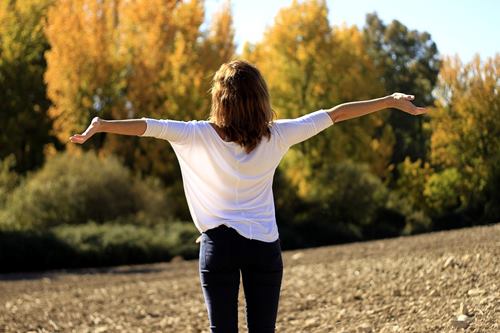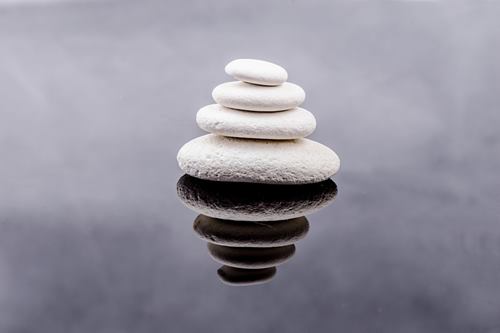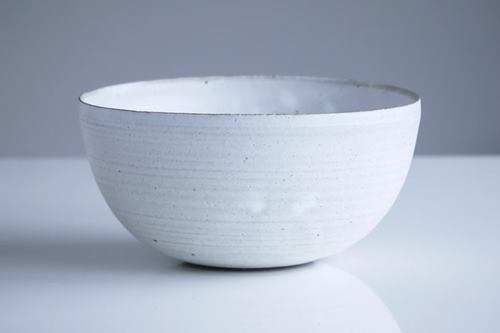Breathing Exercises Breathe Correctly
Breathing Test Learn to Breath Diaphragm Breathing
Breathing Exercises
Breathing exercises might seem strange - why would anyone need to learn how to breathe? Is there really a right way and a wrong way to breathe? The answer is surprising. Proper breathing is a very important part of staying healthy.
Many people do not breathe correctly and need a breath exercise. Anxiety and panic attacks often are associated with poor breathing technique. We all start out as babies knowing how to breathe, but as we grow up various things affect us.
After strong emotional events our pattern of breathing can alter. The emotion passes, but sometimes the faulty breathing method remains. We then have to use a breathing exercise to relearn how to breathe.
Fortunately poor breathing technique is easy to test and easy to correct. A simple breathing test will show if you are breathing properly and how to fix it if you are not.
Need for Breathing Exercises
Incorrect breathing is associated with several health problems. Breathing does more than just move air in and out of your lungs. When the diaphragm muscle moves your chest up and down it actually performs other important functions.
The main arteries go through the center of the diaphragm, and so does the digestive tract and the lymph system. When the diaphragm is moving it also massages the digestive system and pumps the lymph system. Under-exercising the diaphragm risks problems with these essential systems.
Everyone knows about blood circulation, but few know much about the lymph circulation. It is almost as extensive as the blood circulation and is an essential component of your immune system. A weak immune system leaves you open to frequent infections.
Breathing exercises: Diaphragmatic Breathing
The correct way to breathe is by Diaphragmatic Breathing. This involves pushing your stomach out when breathing, or more accurately, raising the diaphragm when breathing. Diaphragmatic breathing maintains the optimum pH level in the bloodstream.
Some people do short, shallow breathing by pulling up their upper body and letting it go. This is called Thoracic breathing. This is inefficient because prevents the air reaching the whole of the lung and leads to poor gas exchange.
If your diaphragm does not move up and down properly, it can cause digestive problems, and increase susceptibility to minor infections.
Try this Breathing Test
Habitual shallow breathing affects your ph levels, (the acid/alkali balance in the bloodstream) and your blood becomes more acidic. This triggers a stress response by causing the pituitary gland to secrete stress hormones into the bloodstream. Constant stress can lead to health problems.
The opposite, Hyperventilation (over rapid breathing) causes the pH to turn alkali which can bring on panic attacks. This is the reason why getting someone in panic to rebreathe into a paper bag works.
It increases the level of carbon dioxide in the lungs and reverses the pH imbalance caused by over breathing. So breathing can have a direct effect on your health. Deep breathing exercise is a good first step to prevent panic attacks.
Diaphragm breathing exercises
To test whether you are breathing properly, here's what to do. Sit or lie down somewhere. You will see the effect more clearly if you are lying down. Put one hand on your upper chest and your other hand on your abdomen, just above your belly button.
Allow your breathing to normalize for a minute or two, and then notice which hand is moving. The correct way to breathe is by moving your diaphragm, which means the hand on your abdomen should be moving up and down as you breathe, but the hand on the chest should be steady.
If you find that the hand on your chest is the one doing the moving, then you are breathing wrongly, and you need to relearn how to breathe from the diaphragm.
If you are sitting down, to test if you are diaphragm breathing, put both hands flat on your stomach, one on each side of your bellybutton, with the tips of the longest fingers just touching. When you breathe you should see a small gap appear between the finger tips. If not you are probably shallow breathing.
Simple exercise to breathe correctly
Learning better breathing is simple. Keep your hand on your abdomen and when you breathe in, make the abdomen rise. It may take a few practices to find the right muscles to do this, but you will know when you have it right because it will feel very natural. You will find that the abdomen rises and falls but the upper body stays still. If you are lying down when you do this you might find it useful to put a cushion or a book on your abdomen so that you can see the rise and fall clearly.
Once you have experienced the correct pattern of breathing and maintained it for a while, all you have to do is to check a few times during the day when you are sitting down, and at night when you are lying in bed. Just put your hands in place and check that they are moving correctly. After a day or two the change will be permanent and you can forget about it. Correct diaphragm breathing will be maintained automatically by this breathing exercise.
Next time you are in a place where you can observe other people, look carefully and you may be surprised to notice how many are shallow breathing instead of diaphragm breathing. The right way to breathe is in through the nose and out through the nose when you are at rest, and in through the mouth and out through the mouth when you are doing strenuous activity.
Breathing Exercises and Self Hypnosis
As well as being important for everyday health, correct breathing is important for self hypnosis. Just sitting quietly and using the breathing exercise will put most people into trance. The breathing technique of taking a deep breath and releasing it stimulates the parasympathetic nervous system which causes the body to relax and release tension.
When you go into hypnosis or self hypnosis you will notice that a series of deep breaths can start you going into trance, but once in trance most of the time you will be shallow breathing, almost imperceptible, and entirely done at the top of the chest.
By monitoring your breathing patterns you know when you are working in the right areas. Whenever you think about some topic that affects your subconscious mind, or when the hypnotist mentions something that touches on a deep concern, you will involuntarily take a deep breath, almost like a sigh but without the sound.
This is a message direct from your subconscious mind.
BREATHING EXERCISE AND MEDITATION
Breathing is an essential part of meditation. In fact one common meditation technique consists of just breathing and suggesting that your mind is free to wander. For example 'Just pay attention to your breathing.
Say silently to yourself "More and more relaxed....' on the in-breath and 'deeper and deeper" on every out-breath' is a very effective way of going into trance. That simple breathing exercise is all most people need.
Another method is to focus on your breathing, and when it has settled down, (very often when you focus on it your breathing rate will speed up for a short time), close your eyes and say the same word softly with each breath out.
The word doesn't matter, it can be anything. Try using 'one', or 'calm' or 'relax' or any other simple word. Using this breathing exercise you will go into a gentle meditation trance for as long as you continue it.
This breathing exercise is an easy way of relaxing and reducing stress and anxiety.
BREATHING EXERCISE AND CONFIDENCE
Square Breathing
Social anxiety, fear of meetings, panic attacks are all things that can ruin your life but are actually easily fixed with a breathing exercise.
One technique that I show my clients is square breathing. This consists of taking control of your feelings by taking control of your breathing. The exercise is simple.
When you get to a situation that causes you distress, you start to take a deep breath. You count slowly from one to five as you breathe in, then you hold the breath for a count of five, then you let the breath out for a slow count of five. Finally, you complete the square by waiting for a count of five before taking the next breath in.
This exercise is very effective at stopping your emotions running away with you. It can deflect panic attacks instantly, and give back that sense of control.
Circular Breathing
There is a relaxation and meditation breathing exercise that uses circular breathing - in through the nose and out through the mouth. There is no direct evidence to support the idea that this breathing technique is actually doing anything.
It is simply a way of making you focus your attention on your breathing: by doing that you stop focusing on other things such as the intrusive thoughts that cause anxiety.
PDVT25
OTHER MEDITATION MINDFULNESS RESOURCES













